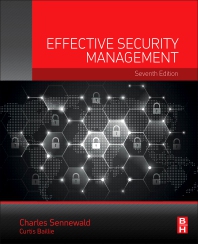The Benefits of Integrating Intelligence and Investigative Analysis
Convergence has been top of mind for years, but what about unifying security intelligence and investigations?

Thought-leaders in the security industry frequently prescribe integration as a cure for problems big and small, and the virtues of integrating operations with technology or intelligence are much touted. Little has been said, however, about unifying the security intelligence and investigative functions. Organizations that combine the two, or at least create closer linkages, have much to gain. Institutions pursuing this kind of integration are in a better position to manage risk and are better able to cultivate employee development.
Security intelligence teams are responsible for monitoring and assessing the impact of political, security, economic and reputational issues around the world. They are the first line of warning an institution may have of an impending risk. Investigative teams, on the other hand, are usually concerned with assessing more specific risks, up to and including threats that have already damaged a company. They may be focused on loss prevention, fraud or threats to key personnel, among other tasks, and depending on their mandate, threat assessment or protective intelligence teams can be said to fall under this investigative umbrella as well.
Many corporations do have combined global intelligence and investigations departments and directors. Nevertheless, within these broader divisions, individuals responsible for conducting analysis are often focused on narrow tasks. Yet there are many reasons why personnel responsible for global intelligence or investigative duties can benefit from widening the scope of their activities and why their firms can also benefit:
- Expansion of the Open-Source Skillset – Since security personnel in any analytical function are heavily reliant on “open-source” (publicly available) information, improvement in open-source research abilities is a major boon to their careers and to their organizations. In this respect, global intelligence personnel can profit from the investigators’ sophisticated understanding of advanced social media tools. On the flip-side, investigators can gain a greater appreciation of traditional media sources and refine their ability to judge media reliability.
- Holistic Understanding of Motivation – Investigators, especially those dealing with threat assessment, are often experts in human psychology, and can impart knowledge that may be foreign to intelligence analysts with a country-specific or regional focus. At the same time, investigators may not have as wide-ranging an understanding of ideologies and structural drivers of human action. Many intelligence analysts with a social science background, therefore, also have something to teach them.
- Seeing the Full Cycle and Full Impact of Threats – By the nature of their work, intelligence analysts frequently look at strategic risks while investigative analysts (and so-called “protective intelligence” analysts) are dealing with past or present operational risks. When these individuals or teams are one and the same or working closely together, the lifecycle of a threat is more apparent. In other words, an organization can more easily see how a broader risk turns into a concrete physical or reputational threat.
- Product Improvement – With reports being the bread and butter of intelligence analysts and investigators alike, concise and fluid writing is paramount. Producing both intelligence and investigative reports – as opposed to just one or the other – can teach analysts how to smoothly transition from the macro to the micro. Being able to effectively jump from explaining background risk to listing specific threats makes for better writers and improves the quality of intelligence and investigative deliverables.
- Higher Career Potential – One of the most common criticisms of analysts concerns their limited ability to tie risk into company impact. By working on both strategic and operational issues, intelligence analysts and investigators can more easily develop ideas about such impact, ranging from long-term effects on a company’s fixed investments all the way to an immediate financial or security problem. This ability can make analytical personnel more valuable employees to the corporate strategy teams and local offices alike. In the long-term, it sets them up for improved career prospects within their organizations.
As these examples suggest, merging investigative and intelligence analysis can help analysts mature and can assist organizations in comprehensive risk identification and management. But what degree of integration between these functions is possible and advisable? This balance depends on the firm or institution. Within smaller companies or consultancies, it may be worthwhile to fully integrate intelligence and investigative roles. This approach can create depth and leadership potential within small teams and prevent high turnover among analysts. It can also encourage business continuity, since no one individual will maintain a monopoly on intelligence or investigative skills.
On the other hand, the larger an organization is, the more difficult full integration becomes. Within Fortune 500 firms, both the potential workload and the highly specific nature of threats requires some specialization. An analyst focused on geopolitical risk, for example, is going to have a difficult time working on complicated fraud cases requiring forensic accounting techniques. Nevertheless, several steps toward integration can be taken even at these companies.
First, larger institutions can implement a rotation system allowing analysts to switch roles for a defined period of time. Joint training sessions for personnel that do not typically work together is another approach; such sessions could be led by intelligence and investigative team leaders themselves. Sharing of standard operating procedures (SOPs) and final products can also go a long way toward fostering an integrated environment. Finally, hiring managers for intelligence and investigative teams should consider employing personnel with unconventional experiences and training them. This can ensure that, even as intelligence and investigative teams remain separate to some degree, analysis does not have to remain stale.
Looking for a reprint of this article?
From high-res PDFs to custom plaques, order your copy today!








